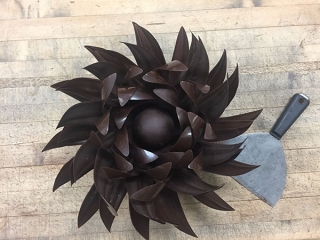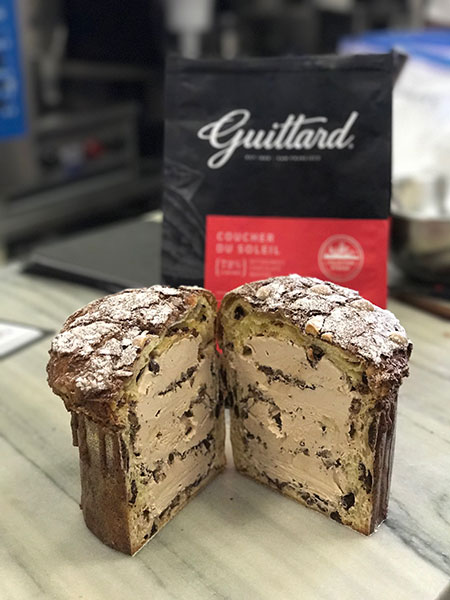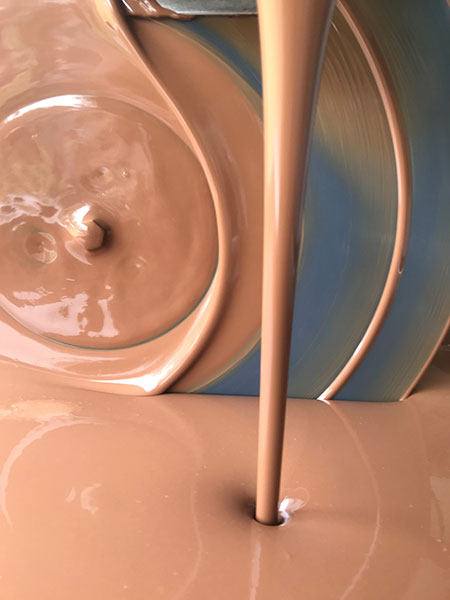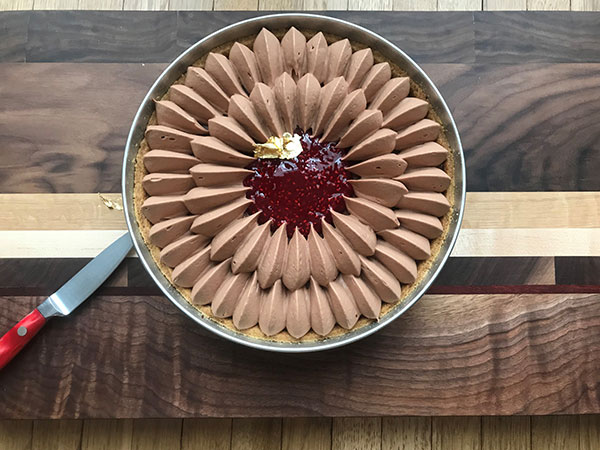
Understanding Chocolate’s Nuances
01 October 2019The science of chocolate starts in the Cacao fruit trees and transforms the humble pod into a sweet ingredient nearly everyone thinks they know.
By Lisa Parrish, GMC Editor
Feedback & comments: This email address is being protected from spambots. You need JavaScript enabled to view it.
 The chocolate chip cookie is ubiquitous and arguably one of the most well-known baked items in America. Most chefs understand the cookie’s appeal – the chocolate chips are soft but still maintain their form and impart that sweet, fudgy flavor. But, just because cooks understand the chocolate chip may not mean they understand chocolate as a complex baking ingredient.
The chocolate chip cookie is ubiquitous and arguably one of the most well-known baked items in America. Most chefs understand the cookie’s appeal – the chocolate chips are soft but still maintain their form and impart that sweet, fudgy flavor. But, just because cooks understand the chocolate chip may not mean they understand chocolate as a complex baking ingredient.
Difference between chocolate for cookies and confections
Chocolate is made from five basic ingredients: cocoa beans, sugar, cocoa butter, soya lecithin, and vanilla beans. However, it’s the concentration of different ingredients that create chocolate which works well for chips or chunks in cookies and bars and chocolate designed for pastries and decorations.
Bars and cookies
Chefs creating bars and cookies look for chocolate that will maintain its form when heated, which means a lower concentration of cocoa butter. Less than 30 percent cocoa butter for chips, according to Josh Johnson, Guittard Chocolate Midwest pastry chef. “Fat in chocolate is cocoa butter and it’s expensive,” he said. That is the reason chips and chunks are generally cheaper as they contain less of the expensive cocoa butter and more sugar. And, less fat means the chocolate maintains its form when heated.
When searching for the choicest chip, there are many cocoa contents to choose from. Cocoa percentages refer to the amount of chocolate or cocoa mass derived from the cocoa bean. Percentages can range from 31 percent for a milk chocolate chip to 100 percent cocoa mass, which is unsweetened chocolate. Johnson said, “A chocolate that is labeled 60 percent cocoa means 60 percent of its mass (comes from) ground beans. The other 40 percent would be sugar, soya lecithin, vanilla, etc.” He continued, “Chocolate has a range of flavor profiles from a bitter form (100 percent coca mass) to a flavor enhancement.”
Couverture
Couverture is chocolate that contains a minimum of 32 percent cocoa butter and is usually a higher-grade chocolate. According to Johnson, chefs would choose a couverture chocolate when creating a showpiece that will be part of a presentation, confection, or bonbon. A higher cocoa butter or fat content means the chocolate becomes a thin liquid when heated and its structure changes. Once a couverture chocolate is heated and cooled, it shrinks and becomes so hard that it crunches and breaks although it smoothly melts in the mouth.
“After the fluid chocolate sets (cools) it makes a nice, thin, hard shell that snaps when broken,” Johnson said. The chocolate will also slightly shrink after cooling, which is why it is used when making chocolate shells and molds.
Johnson suggests using a couverture chocolate when preparing Stracciatella, Italian ice cream that contains flakes of chocolate. “The (cocoa butter) fat turns into a liquid when heated. When you put it on the frozen ice cream, it creates fine strings of chocolate that snap and crunch when eaten,” he said. Johnson also explained that there are six different types of fat in cocoa butter that all melt at different rates.
Compound Chocolate
Compound chocolate is a lower-cost product made from cocoa, animal fat, vegetable fat or palm oil and sugar. It melts to a liquid and does not need the strict temperature control of tempering couverture chocolate. Johnson said it may be easier to work with but does not taste as good as chocolate made with cocoa butter and the mouth feel isn’t as hard and therefore does not snap, unless it’s chilled.
 The why and how of tempering chocolate
The why and how of tempering chocolate
Tempering or melting chocolate is a lengthy process. A chef would choose to temper chocolate if the chocolate would be a glossy coating, pastry decoration, or a candy mold or shell. One would not temper chocolate if the application was a cake, brownie or chocolate mousse. Untempered chocolate can have a dull, matte finish, develop spots and be soft to the bite.
Tempered chocolate must reach a temperature of 120 degrees to melt the cocoa butter and break down its crystal structure. Once it reaches that temperature and the color has changed, the dark bittersweet chocolate is cooled to 89 degrees and milk chocolate is cooled to 87 degrees. It’s at this point that the crystals begin to reform. If it were possible to separate the cocoa butter from the chocolate, it would have a cloudy look and pasty consistency as the fat began to resolidify. It’s at this point a chef can transfer the chocolate to a warmer and use it for up to eight hours if watched properly.
There is another method of tempering chocolate that is slightly less exact but with practice and manipulation, the chef can achieve the same results. Take a pile of chocolate wafers (dark bittersweet or milk chocolate) and divide the wafers into two piles, one consisting of two-thirds and the other one-third. Melt the wafers in the two-thirds pile to 120 degrees then take it off the heat and stir in the one-third wafer pile. The temperature will automatically come down to the prescribed 89 or 87 degrees.
Cocoa flavor and beans Similar to wine, chocolate’s flavor can range from simple to complex and is incredibly influenced by the growing process. “Each type of chocolate has a unique taste that can change slightly when the farms growing the beans experience hot, dry, wet or cold weather,” Johnson explained. Cacao trees need to be cultivated and protected to achieve the best beans. “It’s amazing how people can turn a pod full of beans into this really unique product,” he said.
Similar to wine, chocolate’s flavor can range from simple to complex and is incredibly influenced by the growing process. “Each type of chocolate has a unique taste that can change slightly when the farms growing the beans experience hot, dry, wet or cold weather,” Johnson explained. Cacao trees need to be cultivated and protected to achieve the best beans. “It’s amazing how people can turn a pod full of beans into this really unique product,” he said.
The Guittard Chocolate company prides itself on the honorable sourcing of their beans from farmers who are committed to quality and sustainability. The family-owned company began 150 years ago and have continually been committed to the people and farmers who make chocolate. “It’s education from both sides,” Johnson commented. “There is so much care shown to the farmers. And, when they know where the product goes and how much of an impact the product has, it keeps the farmers caring and motivated.”
Guittard uses shade-grown Cacao tree pods because the delicate beans are protected from excessive direct sunlight during development. This practice also preserves the jungle environment surrounding the crops. The farms that grow cacao pods for the company are selected for their growing practices as well as their social integrity and are concentrated mostly in West Africa and South America.
Chocolate is available in single origin or blended varieties. Single origin chocolate is made from cocoa beans from one place or origin. “An example of a fancier, single origin chocolate is Ecuador Nacional chocolate. It has a unique taste and is different than the acid, fruity taste of Madagascar Criollo,” said Johnson.
“It all comes down to what people want. For example, people who live in Louisville, Ky, might be more curious about the chocolate flavor and story behind the chocolate where a person from Kentucky who doesn’t live in the city might enjoy the more, simple flavor of chocolate chip cookies. It just comes down to knowing the qualities in chocolate people want.”
Photos courtesy of Guittard Chocolate.
